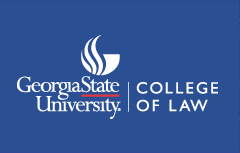Document Type
Article
Abstract
Human trafficking (HT) is increasingly recognized as a public health issue, and its severe consequences affect some of society’s most vulnerable members. Prioritizing prevention is a critical component of a public health framework when addressing HT, and the health care delivery system plays a crucial role in operationalizing primary, secondary, and tertiary prevention interventions. As a significant part of the primary care system in the U.S., Federally Qualified Health Centers (FQHCs) are uniquely positioned to be the first point of contact with the health care system for people at risk for and affected by HT. FQHCs provide many preventive services, health education programs, and community outreach initiatives; therefore, FQHCs have a great reach into the populations at risk of and affected by HT. Furthermore, FQHCs recognize the importance of leveraging legal expertise and services to address their communities’ health-related social needs. There are many models for medical legal collaboration, including formal co-located medical–legal partnerships, as well as broader, community-based relationships. This Article will discuss types of medical–legal efforts and highlight individual patient and organizational case studies from Banteay Srei (a youth development program for Southeast Asian young women and girls at risk of commercial sexual exploitation, a program of Asian Health Services (AHS), an FQHC in Oakland, California). Finally, there will be a discussion about the intersection of HT with intimate partner violence (IPV), and how community partnerships and legal partnerships have played an important role in prevention efforts, with an organizational case study from Futures Without Violence, a national nonprofit providing training, technical assistance, and policy advocacy across the country for violence prevention.
Recommended Citation
Kimberly S. Chang MD, MPH, Hamida Yusufzai & Anna Marjavi,
Medical-Legal Collaboration and Community Partnerships: Prioritizing Prevention of Human Trafficking in Federally Qualified Health Centers,
36
Ga. St. U. L. Rev.
1075
(2020).
Available at:
https://readingroom.law.gsu.edu/gsulr/vol36/iss4/8
Included in
Community Health and Preventive Medicine Commons, Health Law and Policy Commons, Human Rights Law Commons, Law and Society Commons, Social Welfare Law Commons
